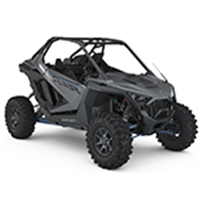
Catalog / Polaris
Polaris: Tracing the Evolution and Pricing of an Off-Road Icon
Polaris Industries, a name synonymous with powersports and off-road adventure, has a rich history dating back to 1954. Founded by Edgar Hetteen, his brother Allan, and David Johnson in Roseau, Minnesota, Polaris began as Hetteen Hoist & Derrick, initially producing agricultural equipment. However, the company's trajectory changed dramatically when they created their first snowmobile in 1956.
The founders' innovative spirit led to the development of the first Polaris snowmobile, the Sno-Traveler, in 1956. This marked the beginning of Polaris' journey as a powersports pioneer. In 1960, Edgar Hetteen embarked on a 1,200-mile snowmobile trip across Alaska to prove the vehicle's durability, a marketing stunt that significantly boosted the company's profile.
Throughout the 1960s and 1970s, Polaris continued to innovate in the snowmobile market. They introduced the TX-L liquid-cooled race sled in 1977, which became a dominant force in snowmobile racing. This period also saw Polaris expand its product line, introducing their first ATV, the Scrambler, in 1985.
The 1990s marked a period of significant growth and diversification for Polaris. In 1992, they introduced the TRAIL BOSS, the first American-made ATV. This was followed by the launch of the Sportsman, a model that would become one of the best-selling ATVs of all time. In 1998, Polaris entered the motorcycle market with the acquisition of Indian Motorcycle, adding a legendary brand to their portfolio.
The new millennium brought further expansion. In 2005, Polaris introduced the Ranger, their first side-by-side utility vehicle, which quickly gained popularity among outdoor enthusiasts and workers alike. The company continued to push boundaries with the launch of the RZR sport side-by-side in 2007, effectively creating a new category in the powersports industry.
Polaris has also been at the forefront of electric vehicle technology in the powersports sector. In 2011, they acquired Global Electric Motorcars (GEM) and Goupil Industrie SA, strengthening their position in the electric vehicle market. The introduction of the all-electric Ranger EV further demonstrated their commitment to sustainable technology.
In recent years, Polaris has continued to grow through strategic acquisitions and partnerships. The purchase of Aixam Mega in 2013 expanded their presence in the European quadricycle market. In 2016, Polaris made headlines by reintroducing the Indian Scout, a modern take on a classic motorcycle that has been well-received by enthusiasts.
Today, Polaris offers a diverse range of products including off-road vehicles (ORVs), snowmobiles, motorcycles, and boats. Their commitment to innovation is evident in features like their RIDE COMMAND technology, which integrates GPS, vehicle diagnostics, and communication systems.
Throughout its history, Polaris has remained true to its roots as an innovator in powersports. From its humble beginnings in snowy Minnesota to its current status as a global leader in outdoor recreation, Polaris continues to push the boundaries of what's possible in off-road adventure.

